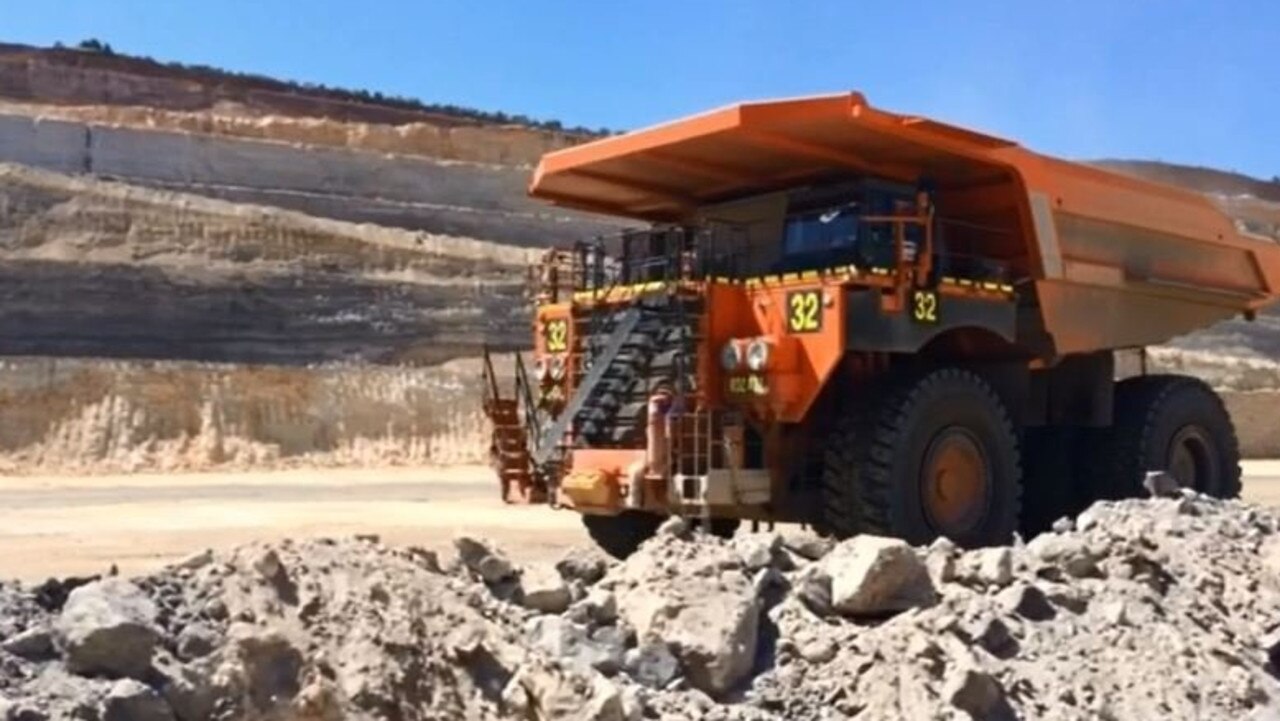Resources boom: $1 in every $5 in Qld comes from lucrative mining sector
Queensland is on the cusp of another resources boom, fuelled by the rush to renewable energy projects, a leading demographer says.
Four times as many Queenslanders work in resources than at the start of the century, with the lucrative sector set to attract more workers and defy skill shortages as demand for mining increases to meet green energy goals.
That is the prediction of leading demographer and statistical Simon Kuestenmacher who has affirmed how reliant the state is on mining with one in every $5 circulating in Queensland’s economy linked back to the sector.
This story is part of The Courier-Mail’s special Future Queensland: Resources series that reveals the truth about the contribution the much-maligned resources industry makes to Queensland.
The series is supported by Bravus, Whitehaven Coal, Queensland Resources Council, the Queensland Government, Senex, Coal Australia and Australian Energy Producers. You can read all of our coverage on the special topic page here.
Mr Kuestenmacher, from The Demographics Group, said the ongoing urbanisation of the middle class in Asian countries, the race to electrify transport and renewable energy projects were driving a demand for Australian resources.
“It means demand for more steel, iron ore and coal because we need that to create steel so the demand for that is not going away,” he said.

“At the same, we are electrifying the global transport network so all of a sudden we need car batteries and they are nothing but a couple of mining products.
“Mining involved in getting solar and wind energy online is the same so we’re not going to slow the demand.”
Mr Kuestenmacher said there was an explicit global goal to transition to green energy but as coal, oil and gas remained the primary source today, they would unlikely be phased out for decades.
“Sooner or later, we’ll run out of coal, so we do need to transition to more renewable forms of energy … but you can’t possibly spin up that much renewable energy in no time,” he said.
“By 2050, quite a few countries said they will not use coal anymore, but that’s only for electricity in most cases.
“Ultimately, coal will be a part of the steelmaking process for a long time.
“The narrative is we (Australia) have cleaner coal than other areas in the world, so as long as you burn coal, you might as well burn Australian coal.”
Mr Kuestenmacher said Queensland’s population was expected to soar to 6.3 million people by 2034 which would drive up demand for local energy consumption and lead to strong workforce demands.
Labour Force data shows there are already 85,000 Queensland employed in the mining sector – four times more than in the year 2000.

“The last sector in the economy that will run out of workers is mining,” he said.
“Structurally speaking, we are running out of workers in Queensland because we have the big boomer cohort retiring over the coming decade, and the people coming into the workforce on the other end is not that big, so that means labour costs go up.
“But the skill shortage will not be a major concern for mining because they can continue to pay high wages and weather that storm.”
Mr Kuestenmacher said the need for steel and critical minerals to build renewable energy infrastructure as well as cost-of-living challenges was changing the public perception of mining.
“You cannot have a green energy future without digging many big holes into the ground so we’ll do more mining and then the attitude towards mining will change,” he said.
“If you look at jobs like teaching and aged care, these are jobs that you might want to proactively choose because you think you’re following a worthy course.
“But more and more workers still have that motivation and need to make ends meet … and then mining looks more attractive than ever.”
Mr Kuestenmacher said mining would continue to be the target of more high taxes and regulations.
“This is our collective wealth in the ground, and we need to make a good buck out of it,” he said.
“I think it will be a slow thing over the next decades trying to restructure how we tax everyone, moving away from a system where we tax income and consumption and we will be seeing big changes and shifts on how we try to tax mining.
“The attitude towards mining will change and that could potentially lead to reforms, like what do we do with the hole once we can’t dig stuff out of it anymore. So I think there will be more regulations there.”

Career administrator Kat Groves’ switch from being a public servant and a law clerk to a working at a mine has seen her work-life balance – and pay packet – improve dramatically.
Ms Groves is one of two site administrators at Bravus’s Carmichael coal mine. She flies in from Rockhampton, working 12 hours a day, seven days on, seven days off.
“The work is quite varied,” she said.
She had been working at Livingstone Shire Council but when her sons finished high school, she jumped at the chance to join Bravus.
It’s a job she says earns her up to $40,000 more than an equivalent position outside the sector.
“People’s first thought is you are in big trucks getting coal out of the ground, but the mining industry is so much more,” she said. “You need your chefs, cleaners, ground staff because if the village doesn’t work, the miners have got nowhere to live.”





